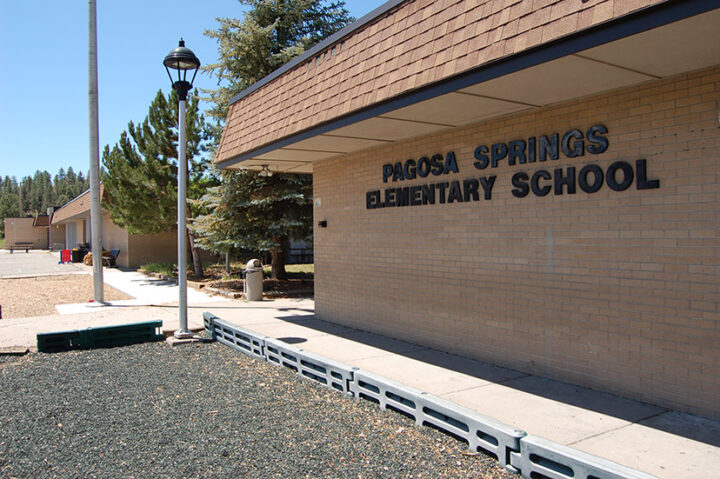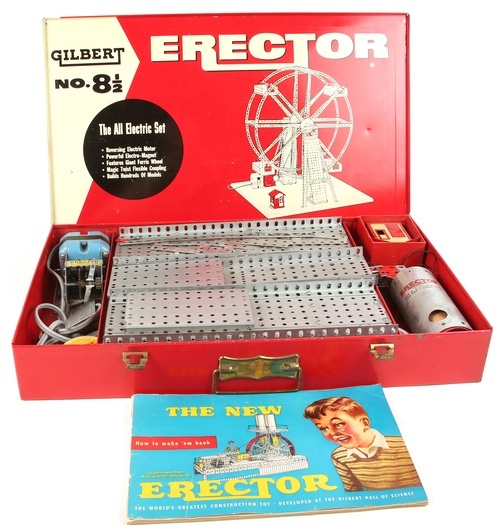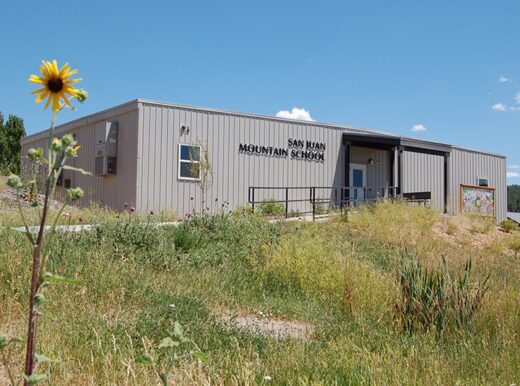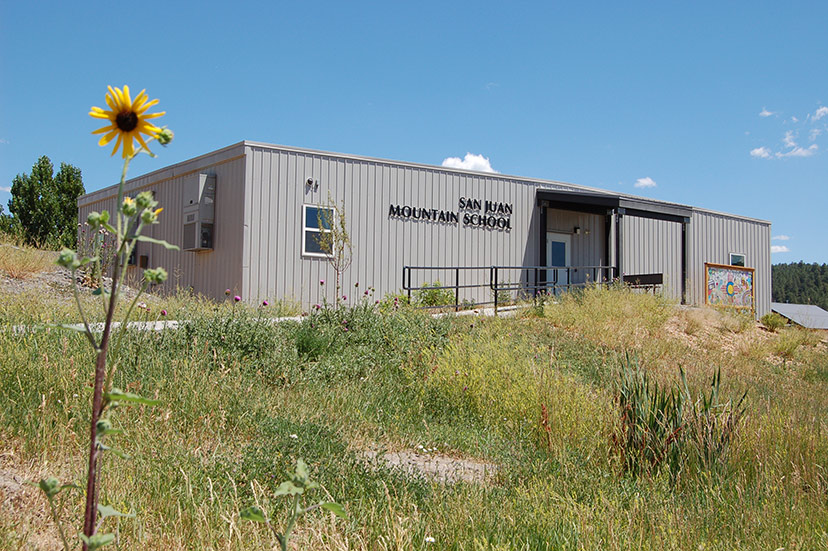Photo: The newly constructed San Juan Mountain School building, adjacent to Pagosa Springs High School. An example of modern architectural design?
Before we get back into our discussion about Lease-Purchase financing and Certificates of Participation, I want to mention the older man standing at the Walmart exit last weekend, holding a cardboard sign. “Anything helps.” He had a dog sitting at his feet.
I pulled a couple of dollars out of my wallet, and handed them to him, out the car window. “God bless you!” he said. I wasn’t necessarily looking for a blessing, but it was certainly considerate of him to offer one.
Fact is, I didn’t need those two dollars… and presumably, he did.
How much would I be willing to spend on remodeling and repairing our existing school buildings, here in Pagosa Springs? Or for brand new buildings, perhaps?
And… if my school district took out a 30-year loan to pay for new buildings, how much of my tax money would flow into the pockets of wealthy bankers and investors, instead of into education?
I had the pleasure of meeting earlier this week with a couple of people involved in Archuleta School District’s community study group, the Master Plan Advisory Committee (MPAC). This group of about 26 people will be making a recommendation to the ASD School Board, possibly in the late spring, concerning the question of school facilities.
Tear down the existing schools and build new? What might that cost the taxpayers, in principal and interest?
Remodel and improve the existing buildings? What might that cost the taxpayers?
Simply maintain the buildings as they exist? What might that cost the taxpayers?
Disclosure: I’m one of the volunteers serving on the Master Plan Advisory Committee, but this editorial series reflects only my own opinions and not necessarily the opinions of any other Committee members.
One of the committee members I chatted with this week suggested that, coming out of World War II and in the middle of the Baby Boom, the U.S. taxpayers were fully in support of building new school buildings, wherever needed. That support lasted into the early 1980s, at which point the school bonds approved to finance all these new buildings were beginning to be paid off.
Two of our current Archuleta County school buildings were constructed during this Baby Boom period — the Elementary School and the 7-8 grade Middle School building (originally, Pagosa Springs High School). The general obligation bonds that financed those schools were paid off many years ago. Now the task is to maintain them in good condition.
But some people would prefer to totally replace them.

Following the first meeting of the Master Plan Advisory Committee on January 27, the School District’s consultants — Colorado Springs-based RTA Architects — posted the minutes of that community meeting. I thought the minutes were relatively accurate, except for a couple of details.
b) Discussions on combating misinformation and communicating facility needs
The committee debated the importance of transparency, effective communication, and the impact of misinformation on public perception.
I actually don’t recall a discussion about “combating misinformation” at the January 27 meeting. Maybe I need to listen back to my audio recording again?
And I don’t recall hearing any misinformation disseminated at the January 27 meeting, either… although I may have heard some “misleading” information.
Sadly, I did not hear the information I wanted most to hear, which was, “How much would it cost the taxpayers to tear down the existing school buildings and built new ones?” That seems to me a relatively simple question for a group of expert architects to answer. Surely, we’ve seen some new schools built in Colorado recently, maybe even some that were designed by RTA Architects. How much did they cost?
The consultants seem strangely reluctant to reveal that kind of information.
I currently serve as a volunteer on the Pagosa Area Water and Sanitation District board of directors, and I recently voted — with my fellow board members — to replace the old Snowball Water Treatment Plant on Snowball Road. That plant currently serves much of Archuleta County east of Put Hill, and the new plant will more than double our drinking water treatment capacity there.
At a cost.
When I first heard the project mentioned (before I joined the board) the cost was estimated at about $20 million. Ouch.
By the time the architects and engineers got done designing it, however, the cost had risen to more than $40 million.
What happened?
Here’s my theory about the exploding cost of government infrastructure. From the 1950s through the year 1964, the top rate for federal income taxes was 91%. The top rate was 70% from 1965 through 1981. With plenty of money to spend, the federal, state and local governments built lots of schools and offices and highways and infrastructure to make America great.
But the top income tax rate fell to 50% in 1982, and then to 28% in 1988. I believe the effective rate for joint incomes of $400,000 is currently about 24%, but it’s now a more convoluted calculation.
Fromm 1950 through 1982, our governments had money to build, build, build. Then the tax revolts took place, and everything built over the previous 30 years began to suffer… from deferred maintenance.
And anything new, in 2025, tends to look like it came from a 1950s Erector Set.


With so many buildings, and schools, and streets… so much government-funded infrastructure… now suffering from decades of deferred maintenance…
…the architects and engineers and construction companies can pretty much charge whatever they want. And the taxpayers are expected to pay it.
With Lease-Purchase Agreements? Certificates of Participation? The worst possible ways to finance something in 2025?

